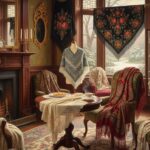The Complete Guide to Antique Silver Investment in 2025
Investing in antique silver has always been the best way to combine smart financial decision-making with owning a piece of history and culture. Silver artefacts in India have a rich history dating back to the Indus Valley Civilization, with evidence of intricate silver jewellery and utensils found in archaeological sites. This early use highlights the importance of silver for both practical and aesthetic purposes, including trade and adornment. Silver as an investment has been a staple in the portfolios of savvy investors looking for both stability and growth.

When one talks about silver investments, it is usually about bullions and ETFs. However, there is another opportunity that many might be missing, i.e. investing in antique silver.
Whether you’re a collector, investor, or just seeking a hedge against inflation, buying silver as an investment —especially antique silver—can offer significant financial advantages. In this article, we will explore why one should invest in silver, the top reasons to invest in antique silver, the best way to buy silver as an investment, and why silver as an investment in 2025 is becoming more attractive than ever.
Why Investing in Silver is a Smart Move
Investing in Antique silver, such as Victorian-era tea sets, intricately crafted fruit bowls, or classic silver dinnerware, offers more than just aesthetic value. They elevate your home décor and serve as solid, long-term investments.

- Diversification
Including antique silver in your portfolio diversifies your investments beyond stocks, bonds, and digital assets. When markets wobble, hard assets like silver—especially rare and collectible pieces—help reduce exposure to traditional market risk.
- Intrinsic and Historical Value
Modern silver is priced by weight and purity. Antique silver brings additional value: history, craftsmanship, and scarcity. A Victorian tea set or an Edwardian fruit bowl isn’t just silver—it’s a story, an heirloom, and a conversation piece.
- Strong Performance in Uncertain Markets
Silver has always been a traditional safe-haven asset in times of economic instability. Antique silver takes that one step further by appealing to both investors and collectors.
Whereas bullion prices move with the market, antique silver pieces—especially those from renowned silversmiths—can hold or even gain value during downturns.
- Limited Supply, Rising Demand
There’s only so much antique silver in the world.
This finite supply creates a steady base of long-term demand, especially as global interest in historical and sustainable luxury grows. Unlike modern silver, antique silver can’t be reproduced, and that scarcity is key to its investment value.
- It’s Functional—And Beautiful
One of the best things about antique silver? You can use it.
Well-maintained antique silverware isn’t just valuable—it’s practical. A silver teapot, a serving dish, or a centrepiece bowl can be both a display item and a part of your daily life.
- Silver as an Investment in 2025
The current landscape makes 2025 an ideal time to invest in silver, especially antique silver, because:
- Inflation remains a concern, pushing investors toward tangible assets.
- Industrial silver demand is surging.
- Younger investors are shifting away from volatile digital assets and seeking real, physical value.
- Online auction platforms like Giftex are making it easier to buy, sell, and value antique pieces globally.
All signs point to a market where buying silver as an investment—and specifically antique silver—can offer both protection and growth.
Acquiring Antique Silver Artefacts
Now that we’ve established why investing in antique silver is both financially sound and aesthetically rewarding, the next step is knowing how to acquire it wisely. Online auction houses like Giftex have made it easier than ever to access quality pieces from around the world.

- Know What Makes a Piece Valuable
Not all silver is created equal. The value of an antique silver item isn’t just about its weight or purity—it’s about historical context, design, rarity, and maker.
Ask yourself:
- Does it come from a notable era (e.g., Georgian, Victorian, Art Deco)?
- Is it crafted by a renowned silversmith (e.g., Tiffany & Co.)?
- Does it reflect exceptional craftsmanship or design?
- Is it rare, part of a limited series, or tied to a significant event?
The more “yes” answers you get, the better the investment potential.
- Research Before You Buy
Treat this like any other serious investment: do your homework. Research different eras, styles, and silversmiths
Focus your research on:
- Periods with high collector demand (like Art Nouveau or early Georgian
- Categories such as tea sets, candlesticks, flatware, or serving pieces
- Market prices for similar items in similar condition
This English Hallmarked Four Piece Tea Set, consisting of a tea kettle, a coffee pot, a creamer, and a sugar bowl, sold at our past Giftex auction, is a fine example of investing in silver artefacts.
- Examine Hallmarks
One of the most critical steps in evaluating antique silver is identifying hallmarks—small stamped symbols that indicate the origin, date, and maker of a piece.
Use online hallmark databases or reference books to verify authenticity. Some hallmarks are incredibly detailed, indicating precise origins that dramatically influence value.
Also Read: Silver Hallmarks Guide
- Evaluate the Condition
Condition affects value—sometimes more than you’d expect. The best investments are well-preserved but show appropriate signs of age (called patina).
The top four condition factors to evaluate are:
- Age – Older is not always better, but documented age adds credibility.
- Craftsmanship – Hand-chased details, engravings, or repoussé work increase value.
- Provenance – A documented ownership history or connection to a historical figure boosts appeal.
- Completeness – Full tea sets or matching flatware services are more valuable than single pieces.
- Buy From Reputable Sources
Once you’ve learned how to spot quality, the next step is to buy from reputable sources like:
- Online auction houses
- Specialist dealers who provide documentation
- Estate sales and antique shows
Always ask for certificates of authenticity, hallmark photos, and condition reports before buying.

- Build a Strategy
Starting a collection requires a clear, focused strategy. There’s no “one-size-fits-all” approach, but here are two popular models:
- Era-Based Collecting
Focus on a time period you find fascinating—like Georgian elegance, Victorian opulence, or Art Deco minimalism. This creates a cohesive and historically meaningful collection.
- Type-Based Collecting
Concentrate on one category, like:
Tea and coffee sets
Candelabras and candlesticks
Cutlery or flatware
This approach helps you become an expert in a specific area, making it easier to spot deals and value increases.
- Store and Care for Your Collection Properly
Once acquired, protecting your silver is critical to preserving its value. Antique silver should be treated like fine art:
If properly stored and maintained, antique silver can remain in pristine condition for generations, retaining and increasing its value over time.
Build Your Heirloom Collection
Acquiring antique silver is not just a matter of taste—it’s a skill. When approached with research, care, and strategic intent, it becomes a profitable and fulfilling investment. Whether you start with a single Art Deco sugar bowl or dive into an entire Georgian tea set, your collection can serve as both a store of value and a source of personal joy.
Bid to win! There is no better time to begin than right now!






